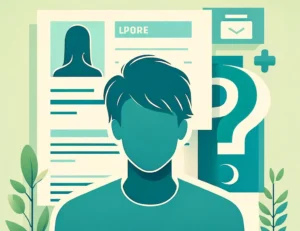Ever find yourself staring at your resume, wondering how to bridge those gaps that life invariably throws our way? It can feel like trying to navigate an obstacle course without a map. Whether it’s time taken off for personal growth, family matters, or unexpected employment lapses, career gaps can seem daunting. Yet, they’re more common than you might think, and certainly not the deal-breakers they’re often perceived to be.
In the following lines, we’re diving deep into the world of resume crafting, specifically addressing how to skillfully navigate through those career hiatuses. You’ll find honest, actionable advice tailored to help you present your career story in the most positive light. This isn’t about masking the truth but about highlighting growth, resilience, and capability. Let’s explore together how to transform perceived vulnerabilities into strengths.
Quick Takeaways:
- Highlight skills and achievements during gaps; include any courses, volunteer work, or projects completed.
- Use years instead of months for job dates to subtly cover short gaps and focus on your professional experience.
- Address longer gaps directly with a “Career Note” or in your cover letter, focusing on growth and learning.
Why Do Career Gaps Matter?
When it comes to your resume, career gaps can sometimes feel like glaring red flags. Understandably, employers might wonder about these breaks in employment. Are they a sign of unreliability? A lack of commitment? Or maybe, they’re concerned about your skills becoming rusty. It’s crucial to remember that such breaks are far more common than you might think, and often, they’re for entirely justifiable reasons like personal development, family care, or even pursuing further education. Nonetheless, it’s important to address these gaps proactively to dispel any potential concerns a future employer might have.
How Can You Frame Your Career Gaps Positively?
Transforming career gaps from potential liabilities into assets on your resume can be a game-changer. Here’s how you can turn the tide in your favor:
-
Reframe with Purpose: Think about what you did during your break that can be relevant to your job. Did you take any courses, volunteer, or freelance? Highlighting these activities can show continuous personal and professional development.
-
Quantify Achievements: If you managed to achieve something noteworthy during your gap, such as raising funds for a cause or leading a project, make sure to quantify these achievements. “Raised over $5,000 for a local charity” sounds much more impressive and concrete.
-
Skill Acquisition: Perhaps you learned a new language, mastered a software crucial to your industry, or completed online courses during your break. Make it a point to list these newly acquired skills. Websites like Coursera or Udemy offer numerous courses that might align with your career.
-
Mind the Gap… in a Smart Way: Instead of listing month-to-month employment dates, consider using years. This strategy can discreetly mask shorter gaps and keeps the focus on your professional experience and achievements.
Unique Insight: One piece of advice seldom mentioned is creating a portfolio or a personal project that relates to your career goals. This can be an effective way to showcase your skills and dedication during your gap period. For example, if you’re in digital marketing, launching a small campaign for a personal blog or a friend’s business and detailing your strategies, results, and what you learned can demonstrate practical skills and initiative.
What Goes into an Effective Cover Letter Regarding Career Gaps?
Your cover letter offers the perfect opportunity to address your career gaps head-on but in a narrative form that adds depth and personality to your story.
-
Be Honest but Positive: There’s no need to delve deep into personal details. A simple explanation suffices, but always spin it in a way that focuses on growth, learning, or how your experience during the gap could benefit your future role.
-
Connect the Dots: Use your gap as a storytelling element. How did your experiences during this time make you a better professional? Maybe your time volunteering abroad enhanced your cross-cultural communication skills, or managing a challenging personal situation developed your resilience and problem-solving abilities.
-
Customize and Target: Remember to tailor your cover letter for each job application. Link specific skills or experiences gained during your gap directly to what the employer is looking for.
-
Close with Confidence: End your cover letter on a high note, expressing your excitement about the opportunity and how your unique journey positions you as an ideal candidate who brings more than just work experience to the table.
Embracing your career gap rather than fearing it can transform a potential stumbling block into a stepping stone. With the right approach, these periods can be portrayed not just as time off, but as valuable interludes of growth and learning that add depth to your professional narrative. Remember, it’s not the gap that matters but how you fill it – both in reality and on your resume.
Should You Enroll in Courses or Certifications During Gaps?
Absolutely. Taking up courses or certifications during career gaps is not just a filler; it’s a strategic move. Why? Because it shows potential employers that you are proactive, eager to upskill, and stay relevant in your field. But here’s the kicker – how you present this learning phase on your resume can make a huge difference.
First off, list any relevant courses or certifications under a separate heading, “Professional Development” or “Continuing Education”. Make sure you include the name of the certifications, the institution, and the completion date. Now, if you’ve done something exceptional like learning a new language or software that’s in high demand, highlight that. It demonstrates adaptability and a willingness to go the extra mile.
However, here’s a pro tip most don’t mention: leverage any hands-on projects or real-world application from these courses. If, say, you designed a website as part of a coding course, link it in your resume. This tangible evidence of your skills can be a game-changer.
How to Emphasize New Skills Gained During a Career Gap?
This is where you turn a potential weakness into a compelling strength. The key is in how you weave your story. Firstly, acknowledge the gap with confidence. Then, pivot to what you’ve learned or achieved during that period.
-
Reflect on your newly acquired skills. Did you pick up project management skills while organizing community events? Or perhaps, you honed your digital marketing skills by starting a blog. These are valuable, and you should articulate how they’re transferable to the job you’re eyeing.
-
Quantify your achievements if possible. Increased blog followership by 200%, or raised $5K for a community project? Numbers grab attention.
-
Utilize the additional information section or cover letter to tell your story. This narrative approach allows you to connect the dots for the employer, showcasing your journey, growth, and how it aligns with your career aspirations.
Remember, agility and the ability to learn are highly prized in today’s job market. Your career gap could just be the proof an employer needs of these traits.
Dealing with Short vs Long Career Gaps: Is There a Difference?
Indeed, there is. And recognizing this helps tailor your approach for better impact.
For Short Gaps (a few months): These are easier to address. Often, you won’t even need to explain a short gap on the resume. If queried during an interview, a succinct explanation suffices. Be upfront and focus quickly on your eagerness and readiness to return to work.
For Longer Gaps (a year or more): Here, detail becomes your friend. Explain the context of the gap directly on your resume. Were you caring for a family member? Traveling? Studying? Briefly outline this in a “Career Note” section. This transparency removes doubts and allows you to steer the narrative.
Table: Showing Short vs Long Career Gaps
| Career Gap Duration | Strategy |
|---|---|
| Short | Minimal explanation required, focus on qualifications. |
| Long | Provide context in a “Career Note”, highlight new skills. |
Lastly, an invaluable piece of advice: Network. Stay connected with your industry through professional groups or forums. It’s surprising how often a good word or a timely tip can bridge the gap on your resume.
To wrap up, addressing career gaps tactfully is about showcasing growth, resilience, and the drive to stay relevant. Remember, your career journey is unique, and if articulated well, even gaps can play a role in highlighting your strengths and readiness for new challenges. With these strategies, you’re not just filling gaps; you’re setting the stage for your next big leap.





